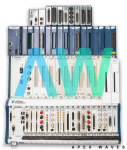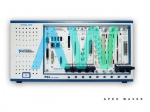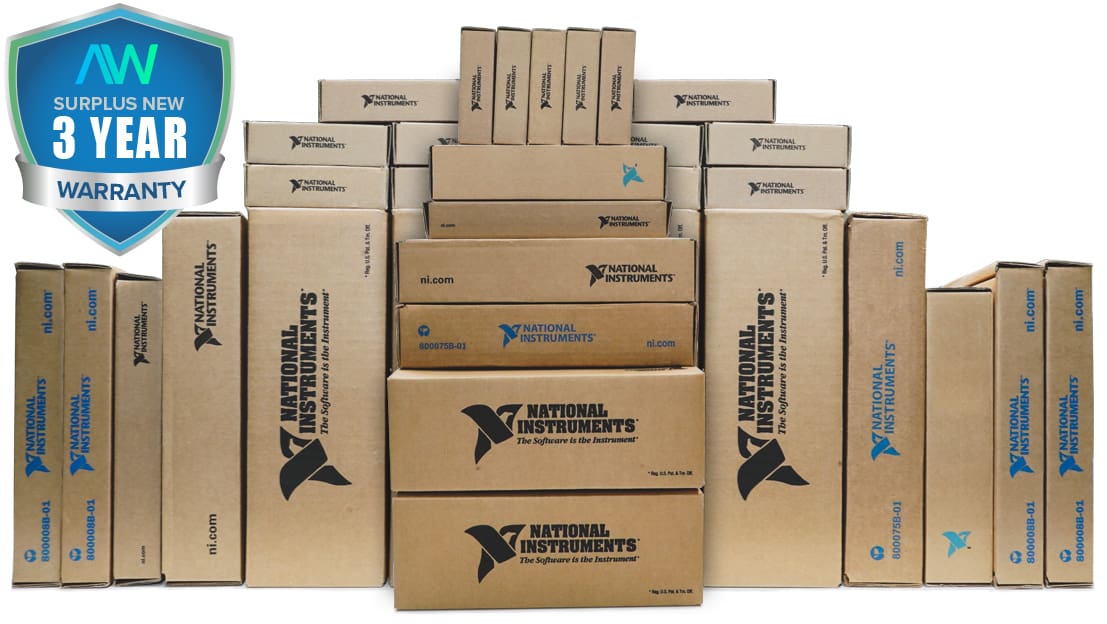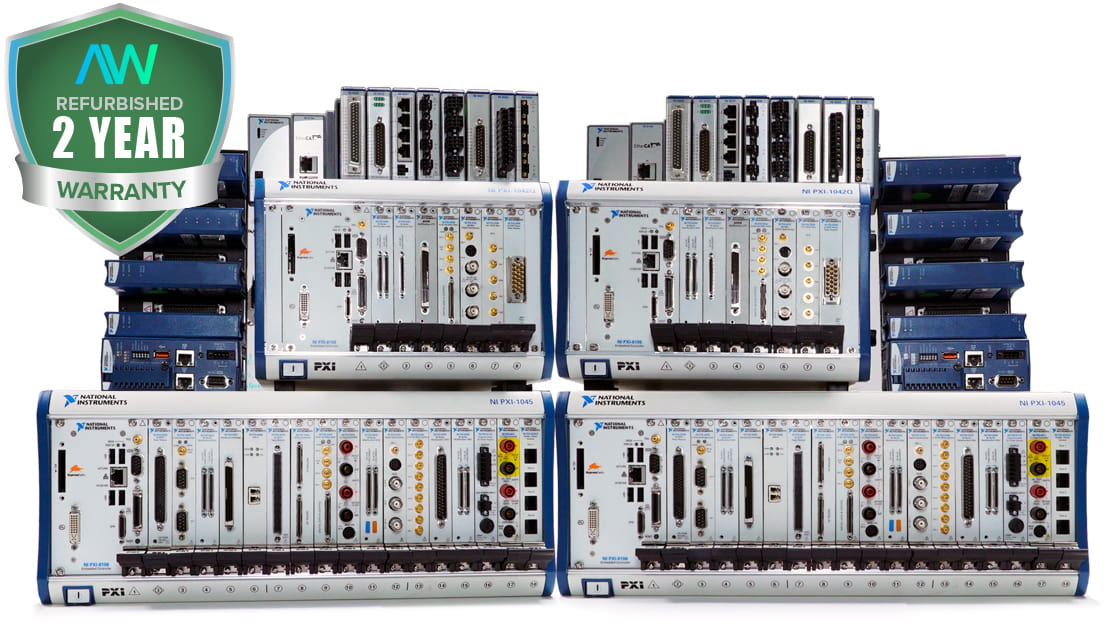Modular Systems > National Instruments > R Series




Pictures shown are a representation. Actual item may vary if no part number is provided on quote request.
✔ Same Day Calibration Available
✔ 2-3 Year Warranty Included
✔ Free Ground Shipping
Or speak to a sales representative for additional information:
Phone:
1-800-915-6216Email:
sales@apexwaves.comPXIe-7866 Request for Availability
PXIe-7866, 1 MS/s, 2 AI, 32 DIO, PXI Multifunction Reconfigurable I/O Module
National Instruments PXIe-7866 Multifunction Reconfigurable I/O Module
The National Instruments PXIe-7866 is a versatile Multifunction Reconfigurable I/O Module designed for engineers and developers who need flexibility and control over their testing and simulation applications. With a reprogrammable FPGA, this device can be used for I/O signal management, onboard processing and direct control. It is an excellent choice for hardware-in-the-loop tests, custom protocol handling, sensor simulation and high speed controlling applications.
The PXIe-7866 module offers 24 analog output channels, 2 input channels and 32 5V digital I/O channels connected to a Kintex-7 325T FPGA. It is highly scalable and provides a great deal of flexibility. This helps improve productivity and streamline operations. The dedicated A/D converter (ADC) provides independent timing, individual channel triggering, and multirate sampling, making it easy to capture and analyze data. With peer-to-peer streaming, you can quickly transfer data to other PXI Express modules without any hassles.
The PXIe-7866 is equipped with analog input channels, each having an AI+ pin, AI- pin and AIGND pin. Single-ended or differential voltage signals can be connected to any of these pins for data transmission. With the AISENSE pin, you can easily connect single-ended signals that are not already referenced. For connecting referenced single-ended voltage signals, ensure that the common-mode voltage is staying within the prescribed range by connecting the voltage ground signal to AIGND.
The PXIe-7866 is equipped with DIO lines that are compatible with 5V TTL, 3.3V LVTTL, and 3.3V LVCMOS- allowing it to receive signals from a variety of sources. When configured as outputs, they can send signals to these same devices. The digital outputs from the system can produce a voltage range between 0V to 3.3V. This is enough to meet the 5V TTL threshold for signaling high, making it viable for digital logic input although it is not at a 5V level. To minimize noise pickup and maximize measurement accuracy, differential AI connections can be used to reject common-mode noise, and cabling should be kept away from noise sources such as video monitors and analog signals. Overall, the NI PXIe-7866 offers a wide range of features and capabilities to help you design and implement high-performance test systems with ease and precision.
Associated part numbers for PXIe-7866:
National Instruments PXIe-7866 Frequently Asked Questions
Question: What's the difference between the PXIe-7865 and the PXIe-7866?
Answer: The major difference between these devices is their FPGA. The PXIe-7865 features a Kintex-7 160T FPGA while the PXIe-7866 features a more powerful Kintex-7 325T FPGA
Question: What connectors are available on the PXIe-7866?
Answer: The PXIe-7866 features the following connectors: Analog I/O Connector 0 (RAIO), Analog Output Connector 2 (RAO), and Digital Connector 1 (RDIO). Consult the PXIe-7865 user manual for the corresponding cables and connector blocks for these connectors.
Question: Is the PXIe-7866 compatible with TTL devices?
Answer: Yes. The PXIe-7866 features DIO lines that are compatible with 5V TTL, 3.3V LVTTL, and 3.3V LVCMOS, making them compatible with most TTL devices.
Question: Can the PXIe-7866 interact with other PXIe devices?
Answer: The PXIe-7866 can directly communicate with other PXIe modules via peer-to-peer streaming, allowing you to create more robust testing and automation systems.
Delivery:
Warranty:
All of our products are covered by our Apex Waves Warranty.
✓ 3 Year Warranty - New Surplus Parts
✓ 2 Year Warranty - Refurbished Parts
Returns:
No hassle return policy.
Dedicated customer service team.
Quick Quotes:
Receive Price & Availability Today!
Calibration:
Ask About Our Tiered Calibration Levels
Option & Modules:
Confirm Your Requirements or Versions
Repair:
Cost & Lead Time Available Upon Request for Service
Repair Evaluation: $150
Common Typos:








